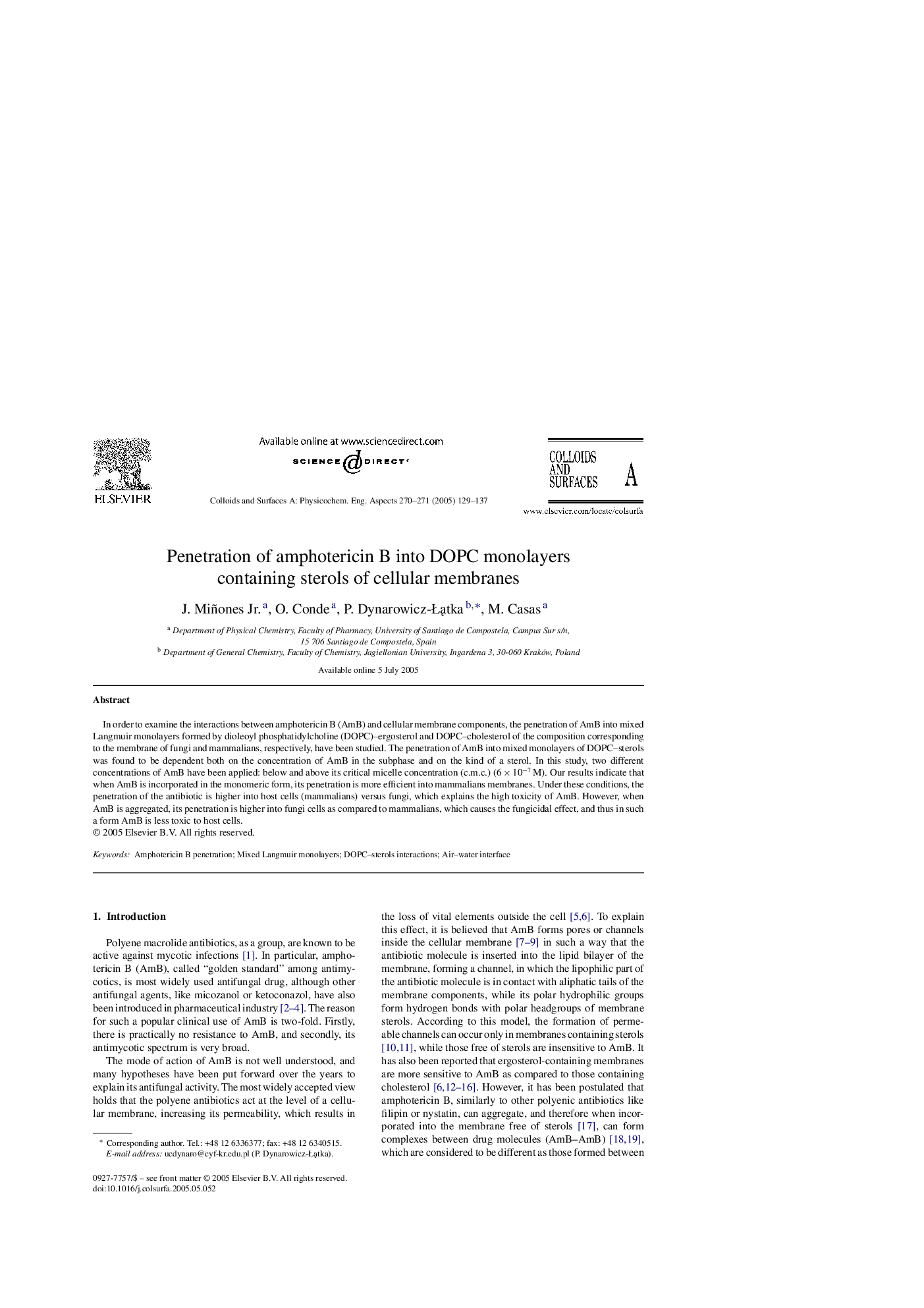| Article ID | Journal | Published Year | Pages | File Type |
|---|---|---|---|---|
| 9675532 | Colloids and Surfaces A: Physicochemical and Engineering Aspects | 2005 | 9 Pages |
Abstract
In order to examine the interactions between amphotericin B (AmB) and cellular membrane components, the penetration of AmB into mixed Langmuir monolayers formed by dioleoyl phosphatidylcholine (DOPC)-ergosterol and DOPC-cholesterol of the composition corresponding to the membrane of fungi and mammalians, respectively, have been studied. The penetration of AmB into mixed monolayers of DOPC-sterols was found to be dependent both on the concentration of AmB in the subphase and on the kind of a sterol. In this study, two different concentrations of AmB have been applied: below and above its critical micelle concentration (c.m.c.) (6Â ÃÂ 10â7Â M). Our results indicate that when AmB is incorporated in the monomeric form, its penetration is more efficient into mammalians membranes. Under these conditions, the penetration of the antibiotic is higher into host cells (mammalians) versus fungi, which explains the high toxicity of AmB. However, when AmB is aggregated, its penetration is higher into fungi cells as compared to mammalians, which causes the fungicidal effect, and thus in such a form AmB is less toxic to host cells.
Related Topics
Physical Sciences and Engineering
Chemical Engineering
Colloid and Surface Chemistry
Authors
J. Jr., O. Conde, P. Dynarowicz-ÅÄ
tka, M. Casas,
